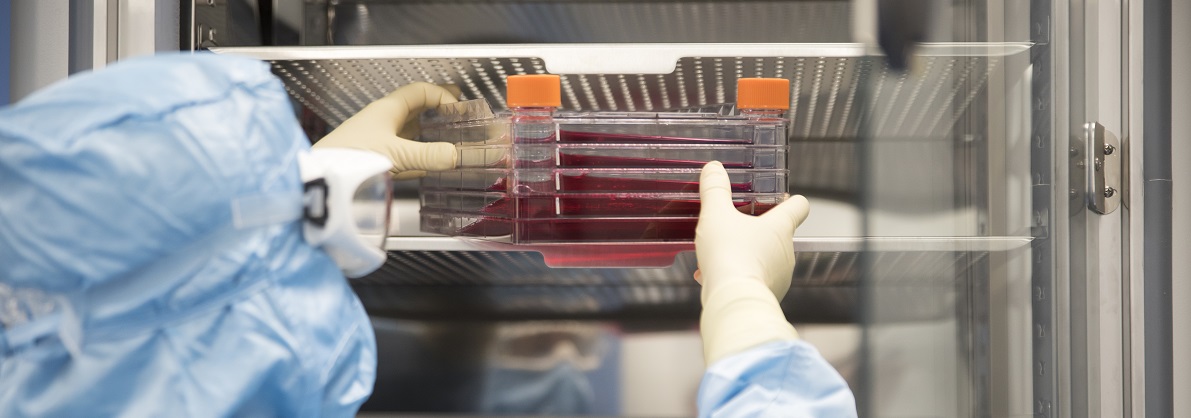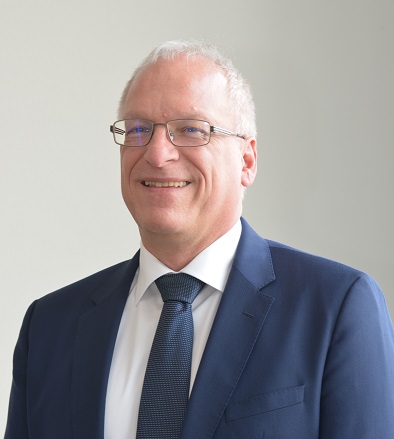
Innovation is key to sustaining our business

December 15, 2021
We’re continuously looking for new ways to innovate so we can better serve patients with high unmet needs. With new modalities like cell and gene therapies comes new learning opportunities, especially for our teams in manufacturing. Thomas Wozniewski, Global Manufacturing & Supply Officer, shares more about how we’re using data and digital at our production sites to bring life-transforming treatments to those in need.
Takeda currently operates more than 30 manufacturing sites in 17 different countries, covering small molecules, biologics, plasma derived products, vaccines and most recently, cell and gene therapies. Each site is committed to finding efficiencies that improve our processes so we can help patients live better lives.
Investing in our people and new technologies
At our manufacturing sites and across our global functions, we’re embracing new tools and new ways of working. However, our focus on innovation is not to replace our people or to reduce our workforce. Instead, these tools will free up time for our employees to support future growth, and to focus on improving processes and finding efficiencies. As we continue to innovate and grow our business, our jobs will simply evolve.

“We’re investing in new technologies and automation, but that doesn’t mean jobs will go away,” said Thomas. “Automating processes allows our teams to improve our processes and to make them more efficient, robust and safe, while reducing the physical strain to our operators. And as we continue to evolve our processes, we’ll have new jobs to offer that we didn’t have in the past – data scientists, for example. So with more innovation comes more attractive jobs opportunities.”
Along with technological updates, we’re also investing in and empowering our people. “We have a program called AGILE 4.0 which focuses on continuous improvement across several workstreams, including data and digital, and people and culture,” he continued. “There’s a team dedicated to a learning and development strategy. And we use technology like augmented reality to help train our people in a digital twin of the production area so they’re prepared when new production lines physically arrive at our sites.”
Adding new technologies as part of our process isn’t an easy task, especially during the COVID-19 pandemic, but our teams have stayed committed. “I’m so proud of my team for their work in executing on our investment projects. With their patient-focused mindset, they found creative ways to get new equipment up and running with the help of colleagues virtually connected in a very challenging environment.”
A warp speed program
COVID-19 brought a lot of disruption around the world, but there were positive implications for the pharmaceutical industry, including the acceleration in bringing new medicines to market. Realistically, we can’t accelerate all our processes, but we can apply some of the learnings when launching new products.
“Typically, launching a new product can take several weeks or months*,” Thomas shared. “But because we’re working with our R&D, pharmaceutical science and commercial teams to gather data earlier, we’re better prepared to launch shortly after approval. Most recently, we were able to launch two products within days of receiving separate U.S. regulatory approvals, which is a testament to our teams’ dedication to patients.”
Innovation brings us closer to patients
As we continue to improve within our manufacturing sites, we have one goal in mind – to deliver transforming medicines to patients who need it. And with new modalities like cell and gene therapies, we’ve had to adapt to new processes.
At our Osaka Juso manufacturing site, we recently opened a new production line for a stem cell therapy that has a short shelf life of only 72 hours. This hurdle means our teams have had to transform their ways of working to ensure timely delivery of the product to the hospital where the patients receive it. They’ve spent a lot of time and effort gathering data to further digitize, and as a result, expedite our processes.
“We had to develop a new supply chain control tower for make-to-order,” said Thomas. “Now, hospitals can have access to our ordering system, which allows doctors to block production slots in advance.” Once a production slot is blocked, the hospital can track where the product is – from manufacturing to shipping and delivery. Thomas continued, “Not only does this ensure that patients get the medicine they need, but it’s given us a new way of connecting with the hospitals and patients.”
A longstanding commitment to patients
Everything we do at Takeda is rooted in our heritage and value. “For me, heritage means knowledge and experience,” said Thomas. “We have a long history of doing what’s best for patients and going the extra mile to overcome challenges. As long as we stay curious and willing to learn new ways of working, we’ll stay competitive for years to come.”
Learn more about our manufacturing sites.
Medical information
This content contains information about products that may not be available in all countries, or may be available under different trademarks, for different indications, in different dosages, or in different strengths. Nothing contained herein should be considered a solicitation, promotion or advertisement for any prescription drugs including the ones under development.
*The situation will change depending on the regulations, systems, and approval processes of each market.